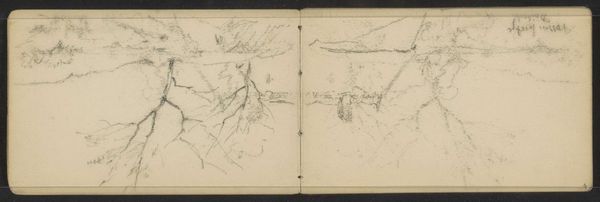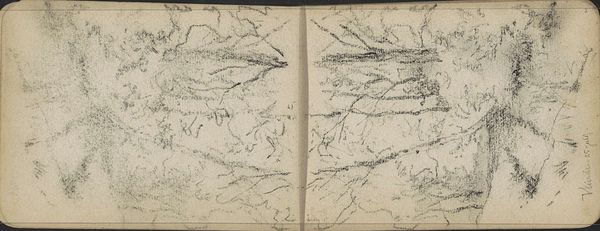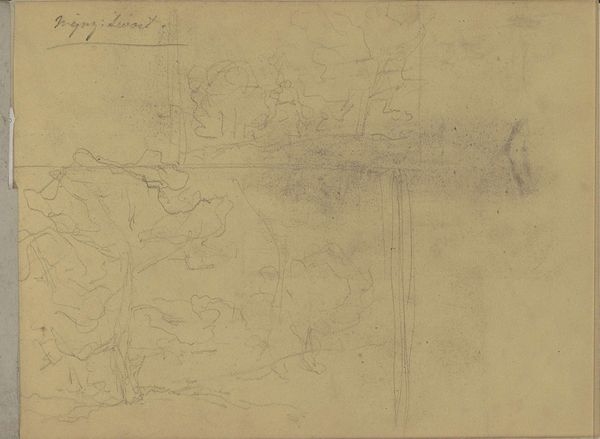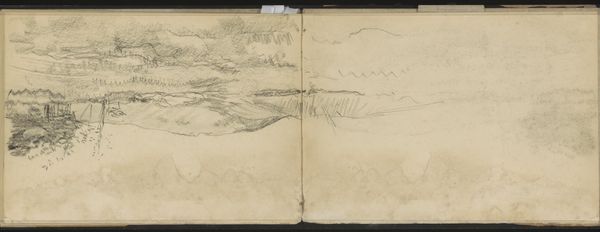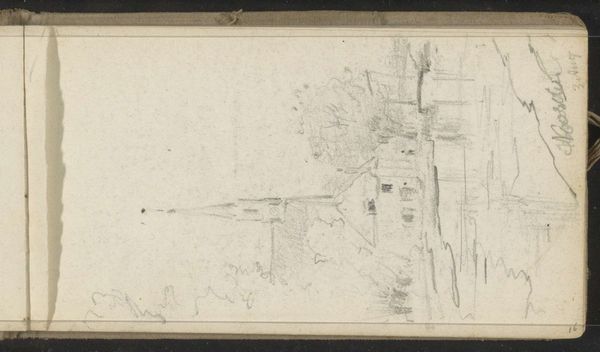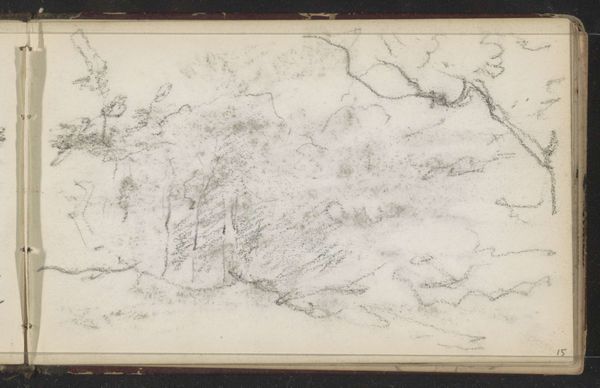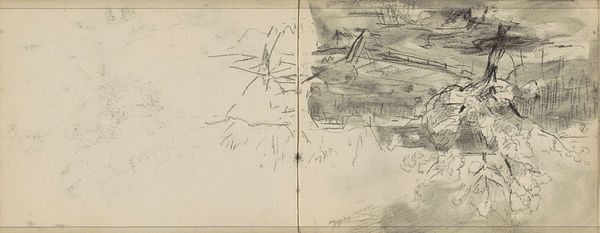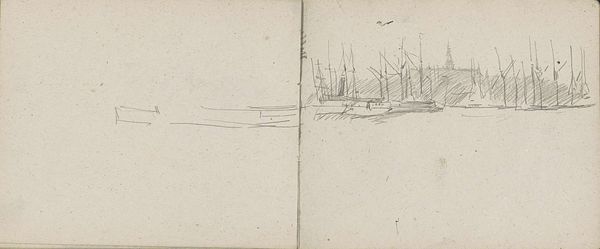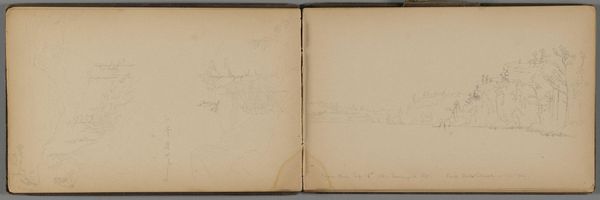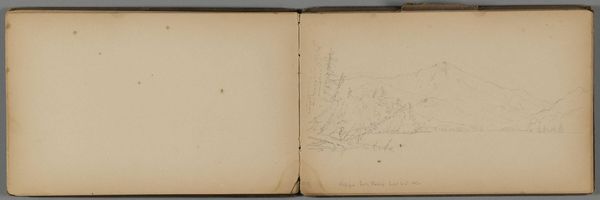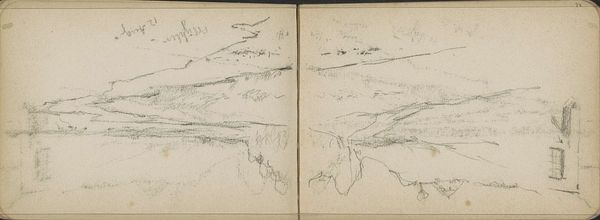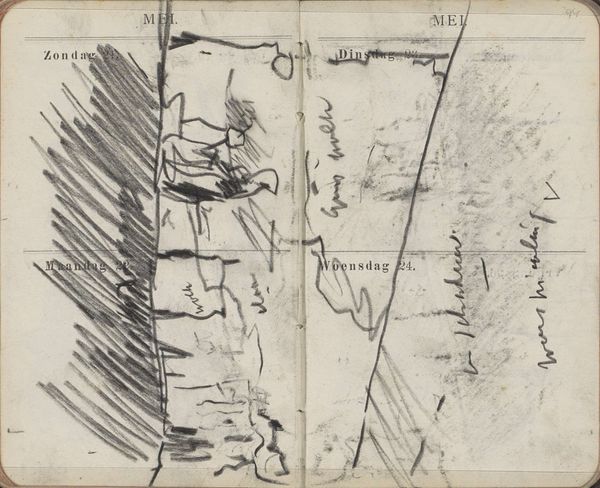
drawing, pencil
#
drawing
#
light pencil work
#
pen sketch
#
sketch book
#
hand drawn type
#
landscape
#
personal sketchbook
#
ink drawing experimentation
#
pen-ink sketch
#
pencil
#
line
#
pen work
#
sketchbook drawing
#
sketchbook art
#
realism
Dimensions: height 95 mm, width 154 mm
Copyright: Rijks Museum: Open Domain
Curator: Here we have Willem Cornelis Rip's "Huis met een puntdak," created in 1892. It's a simple pencil drawing, seemingly plucked right from the artist's sketchbook. What are your initial impressions? Editor: Hmm, immediate impression? Sparse, like a winter tree against a grey sky. Makes me think of stark landscapes and solitary wanderings, you know? The kind of place a lone artist would set up their easel. Curator: It's the economy of line that strikes me. Each stroke seems deliberately placed to convey form and volume with minimal effort. Note the recurring triangular motif – the roof, the implied gables – creating a rhythmic visual structure. Editor: Rhythmic, sure, but also a little melancholy. It's that simplicity, I think. The drawing's unfinished quality lets your mind fill in the gaps. Like, what's *inside* that little house? What stories are brewing behind those small, sketched windows? Curator: The negative space plays a crucial role. See how the emptiness around the house defines its shape, almost giving it a sense of isolation within the larger landscape. And consider Rip’s use of shading – just a hint, really, to suggest depth. Editor: Right. He doesn't give you all the answers; he nudges you toward asking the questions. It's humble, I like that. No grand statements, just a quiet observation of a common structure. What do you make of the identical drawing on each page? Curator: We see the dual impressions; it reinforces a study of form and structure across slightly varying perspectives. He seems captivated by its essence, depicting multiple studies side by side—very pragmatic! Editor: Maybe it's like looking at a memory – slightly altered each time you revisit it. Each drawing, similar but uniquely flawed in its own subtle way. Gives it a fragile humanity, right? Curator: Indeed. It reflects the human touch. We see in the subtle variations how even in replication, true duplication is unattainable. Each stroke reflects a new impression. Editor: So, not just a study of a house, but a meditation on perception itself, perhaps? Makes a fella think. Curator: Precisely! Thank you. I, too, find myself considering the fleeting nature of memory—artfully etched upon the page. Editor: A brief, ephemeral whisper in the landscape. That’s nice. Thanks for pointing it out, man!
Comments
No comments
Be the first to comment and join the conversation on the ultimate creative platform.
